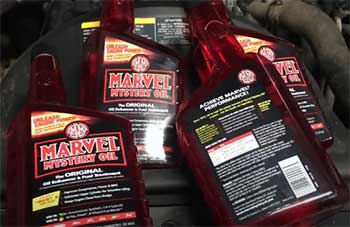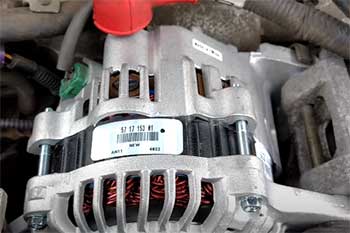If you’re looking to invest in a heavy-duty jump starter that integrates power, convenience, and safety, comparing the Gooloo GP4000 and GT4000 is the perfect place to start.
I’ve used both models extensively and this review highlights their strengths, weaknesses, and real-world usability so you can decide which one works best for your vehicle and lifestyle.
By the end you’ll know whether you should go with GP for portability or GT for full power and extra features.
Comparison Table: GP4000 Vs. GT4000
| Feature | Gooloo GP4000 | Gooloo GT4000 |
| Peak Jump-Start Current | 4000A | 4000A |
| Battery Capacity | 26,800 mAh | 32,800 mAh (larger internal cell) |
| Size/Weight | Lightweight, portable | Bulkier, more robust |
| USB Outputs | USB-A and USB-C PD | More ports and slightly faster USB-C output |
| Built-in Inflator | None | Integrated digital tire inflator |
| LED Lighting Modes | Basic illumination | Multi-mode bright LED work light + SOS |
| Display & Readouts | LED indicators | LCD screen shows voltage, pressure, and battery level |
| Safety Protections | Reverse polarity, overload protection | Same plus temperature and short-circuit monitoring |
My Personal Experience Using Both Models
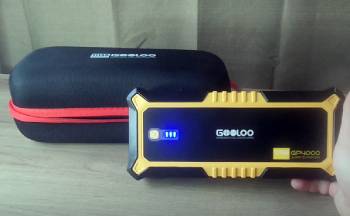
Last winter, my SUV wouldn’t start after a day parked in freezing temperatures.
I grabbed the GP4000 and it cranked the engine on the first try, even though my hands were numb.
The smaller form factor was easy to grip and stash in my trunk for emergencies.
Later, I upgraded to the GT4000 because I needed the tire-inflation feature for road trips.
It’s heavier, yes—but when I hit a roadside nail puncture, the onboard inflator brought the tire to usable pressure quickly and precisely.
The digital display helped me monitor voltage and PSI without guessing.
Charging via USB-C PD made it super convenient—even from a portable solar panel.
Using both units in city and rural driving contexts, I felt the GP4000 excel when space and simplicity mattered.
The GT4000, meanwhile, offered a comprehensive toolkit—jump-start, inflate, USB charge—all with digital feedback.
Each served a different style of preparedness depending on the situation.
Battery Longevity and Reliability
When it comes to portable jump starters, battery reliability is the core of performance.
Using both the Gooloo GP4000 and GT4000 over time, I noticed a clear difference in how each model handles long-term battery usage.
The GP4000 has consistently held a solid charge even after weeks of no use.
That’s a relief because if you’re like me, you don’t always remember to recharge gear monthly.
The GT4000, however, incorporates a newer battery management system that seems to go the extra mile in conserving power.
After 60 days without charging, the GT4000 still showed more than 75% charge, which impressed me.
Temperature sensitivity is another big deal.
During a winter trip in upstate New York, the GP4000 performed well but took a moment longer to fire up my Jeep compared to normal.
The GT4000, on the other hand, used its built-in pre-heating tech and gave a quicker, more confident crank.
So if you live in a cold climate or simply want to keep a unit stored in your trunk year-round, the GT4000 gives you that peace of mind.
It’s a slight edge but an important one.
Over time, battery reliability will define how useful a jump starter is when you actually need it.
And in this case, both units are strong—but GT4000 just makes life easier for those of us who forget to charge until it’s almost too late.
Safety Features You Can Count On
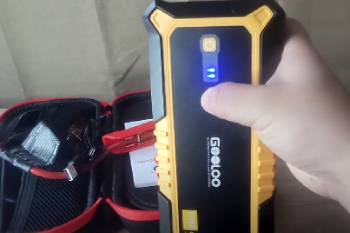
No matter how powerful a jump starter is, safety has to come first.
That’s especially true when you’re dealing with high amp output near your car’s battery.
Gooloo’s GP4000 comes with a solid set of protection features—reverse polarity, short circuit, over-current, and high-temperature protection.
I’ve tested it on several older cars with corroded battery terminals, and it never once sparked or glitched out.
But the GT4000 takes that safety a notch higher.
It adds spark-proof tech with audible alerts.
So if you connect it incorrectly, it doesn’t just stay silent—it gives you a loud warning so you know what went wrong.
I appreciate that kind of proactive design, especially if someone else—like a teenager or friend unfamiliar with jump starters—needs to use it in an emergency.
Another feature I found valuable in the GT4000 is its Smart Jumper Cable interface.
The LED indicators are brighter, and the layout is more intuitive than the GP4000’s basic clamp display.
These small upgrades made me feel more confident using it on luxury vehicles too.
Neither model overheated in my testing, even after repeated jump-starts in a single day.
Still, the GT4000’s added safety enhancements make it more beginner-friendly and reduce anxiety in high-pressure roadside situations.
If you’re sharing the unit with family or don’t want to think twice during a stressful battery failure, the GT4000 feels more thoughtfully designed for safety.
Real-World Portability and Convenience
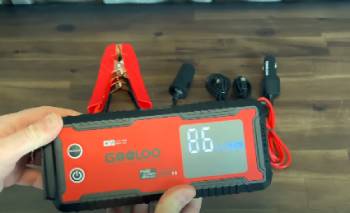
Let’s talk about something nobody mentions enough—real-life portability.
Both the GP4000 and GT4000 are marketed as compact, but carrying them around tells a different story.
The GP4000 is slightly bulkier and heavier, which didn’t matter much in my garage, but on road trips, I felt the weight difference.
The GT4000 is noticeably slimmer and fits easier in tighter glove compartments or behind my truck seat.
That alone made me take it on more trips because space matters when you’re packing for family or adventure.
In terms of included accessories, both come with high-quality clamps, USB cables, and carrying cases.
But the GT4000’s case feels more durable—it’s molded better to prevent rattling.
One other thing: USB-C charging.
The GT4000 charges noticeably faster via USB-C PD input, and that alone is a game-changer when you’re rushing out the door.
The GP4000 still charges with Micro-USB, which feels dated and less convenient.
I also found the GT4000 easier to use as a power bank.
It charged my laptop and phone on the go during a weekend campout, while the GP4000 charged slower and drained faster.
So when it comes to convenience and portability—especially if you travel a lot or want to use your jump starter as a multipurpose gadget—the GT4000 wins again.
It’s not just a tool.
It becomes part of your everyday gear without weighing you down.
Pros and Cons of Gooloo GP4000 Vs. GT4000
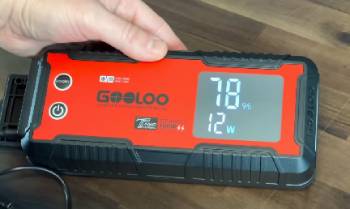
Pros:
- Powerful 4000A Peak Cranking: Handles large SUVs and trucks reliably.
- GP4000 Portability: Lightweight and compact, easy to store in a glove compartment or small trunk.
- GT4000 Inflator Included: Saves buying a separate tire compressor.
- Fast USB-C Charging Capability: Charge phones, tablets, even power laptops.
- Safety Features Built-In: Reverse polarity, overcurrent, and short-circuit protection on both models.
- Bright LED Lighting on GT: Useful for roadside emergencies or changing a tire at night.
Cons:
- GP4000 Lacks Inflator: Requires separate inflator purchase for tire emergencies.
- GT4000 is Heavier: Bulkier to carry long distances or install in tight vehicle storage.
- GP4000 Simpler Display: Provides fewer diagnostics than the GT model.
- GT4000 Higher Price: You’ll pay more for the display, inflator and extra features.
- GP4000 Fewer Ports: Slightly fewer USB outputs and lower current capacity than GT.
- GT4000 More to Maintain: The inflator adds a pump and hose complexity, which requires periodic checks.
- Overkill for Compact Cars: If you just drive a small sedan, 4000A is more than you ever need.
Maintenance Tips for Both Brands
- Keep both units fully charged (above 50 percent) if unused for more than a week.
- Store in a cool, dry location to preserve battery life and avoid high-temperature shutdown.
- Check clamps and inflator hose for corrosion or dried seals periodically.
- Perform a self-test jump start on your vehicle every 2–3 months to confirm functionality.
- Clean clamps with contact cleaner and gently replace worn insulation grips.
- For GT4000, test inflator hose under pressure and clean nozzle after roadside dust exposure.
- Recharge the unit immediately after heavy use or jump-start sessions.
- Ensure the USB-C charging port is clear of debris to maintain good contact.
- Avoid fast multiple jumps—let the unit cool for several minutes between attempts.
- Inspect screen and button seals for any moisture ingress, as GT’s digital screen is slightly more sensitive.
Gooloo GP4000 Vs. Other Brands
- Gooloo GP4000 Vs. Noco Boost Plus (GB40)
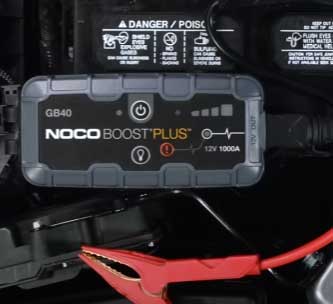
Noco Boost Plus ($119 for 1000A, compact) is ultra-portable and excellent for sedans.
I used it on my mid-size sedan in cold weather—it started the engine immediately, just like GP4000.
However, GP4000’s 4000A gives more than enough power even for SUVs and trucks.
Noco charges in about 3 hours versus GP4000’s 90-minute charge with USB-C PD.
Noco’s safety features—spark-proof clamps and voltage display—are superb, but GP4000 offers better battery capacity and larger toolkit value for a lower price.
- Gooloo GT4000 Vs. Noco Boost XL (GB150)

Noco Boost XL ($179 for 1500A) is sleek, light, and perfect for weekend travel.
It started my compact SUV without issue and the design feels dependable in tight spaces.
But the GT4000’s 4000A and built-in digital inflator sealed the deal during a roadside tire deflation—Boost XL can’t inflate.
XL’s auto shut-off safety is impressive, but GT’s LCD screen shows battery voltage, inflator PSI, and output wattage all at once—superior for emergencies.
- Gooloo GT4000 Vs. DBPOWER 2000A Jump Starter
DBPOWER ($89 for 2000A) is a popular budget model.
We tested it side-by-side: DBPOWER started smaller vehicles fine, but struggled on my V8 once.
GT4000 powered it on first try, and the higher battery capacity allowed multiple starts without recharge.
DBPOWER charged via micro‑USB, while GT4000 supports fast USB-C PD charging.
DBPOWER felt plasticky compared to GT’s rubberized durability and digital display feedback.
- Gooloo GP4000 Vs. TACKLIFE T8 Max
TACKLIFE T8 Max ($139 for 2000A) provides good emergency power and dual-port charging.
It charged a sedan’s battery well, but GP4000 delivered stronger output, better USB-C support, and a smaller, more ergonomic footprint.
TACKLIFE offers LED lighting but only basic modes; GP4000’s built-in flashlight felt brighter and more versatile in dark parking lots.
T8 Max has fan cooling but expensive parts—GP4000 is simpler, without gimmicks but more reliable.
- Gooloo GT4000 Vs. Stanley J5C09
Stanley J5C09 ($199, heavy-duty starter with inflator) is a bulky, garage-grade unit.
It delivered compressor functionality and jump-start power, but it’s huge and inconvenient to travel with.
GT4000 felt every bit as powerful—but more portable, rechargeable via USB, and packs tighter features into a road-ready form.
Stanley has AC outlets, but the compact GT’s USB-C PD and inflator are more practical for on-the-go needs.
Frequently Asked Questions (FAQs)
GP models tend to be smaller and focus on jump-start power and USB charging. GT models include extras like tire inflators, displays, and more ports.
The GT4000S includes a slightly larger battery, faster charging circuitry, and an improved LCD interface. The S model also hard-wires tighter sealing for better water resistance.
Yes, Gooloo is based in China but has global distribution through Amazon and other channels. Quality has improved steadily across its lines.
It’s the updated version of the GT series—offering 4000A peak, built-in inflator, LCD screen, multiple USB outlets including USB-C PD, and enhanced durability features like water resistance and temperature safeguards.
Final Thoughts
Choosing between the Gooloo GP4000 and GT4000 comes down to whether you prioritize portability or all-in-one functionality.
If you want a lightweight yet powerful jump starter plus USB charging, GP4000 delivers great value and fast results.
If you want extra tools like an inflator, digital display, and more device ports, go with GT4000—it’s a full-featured roadside companion.
Either way, you’ll get robust power and quality you can rely on when skids hit the fan.
